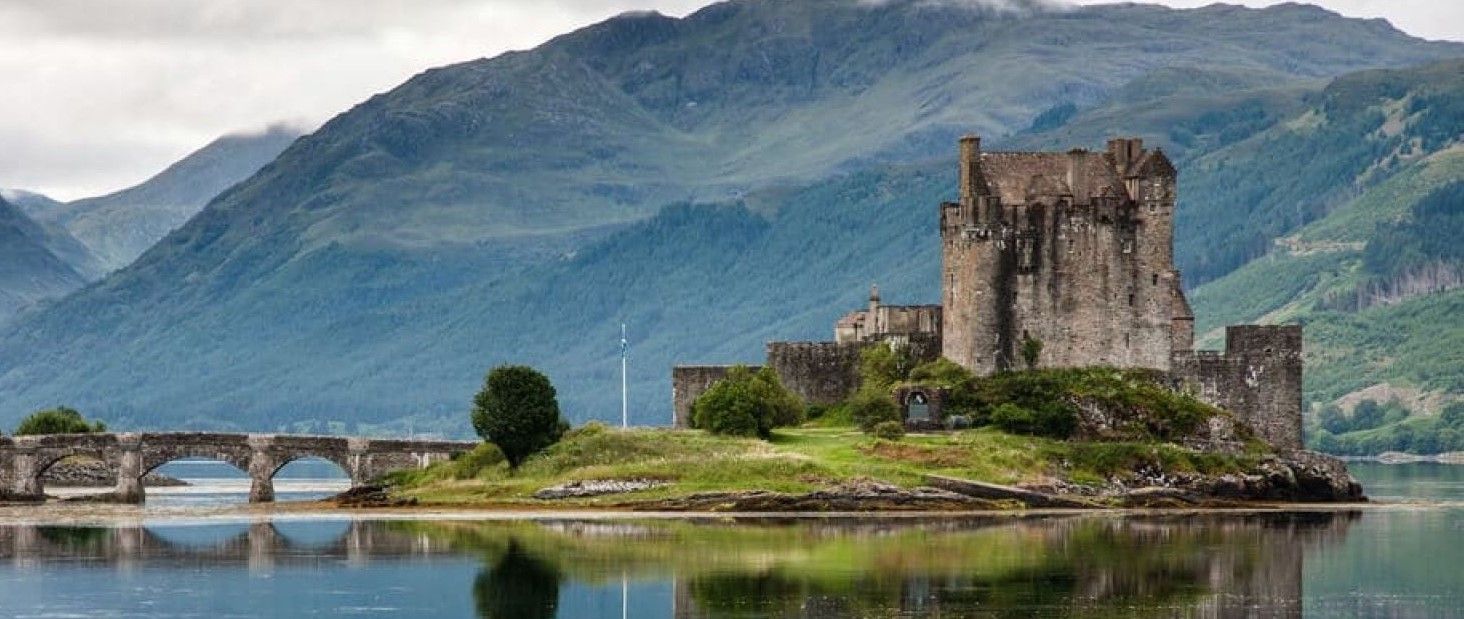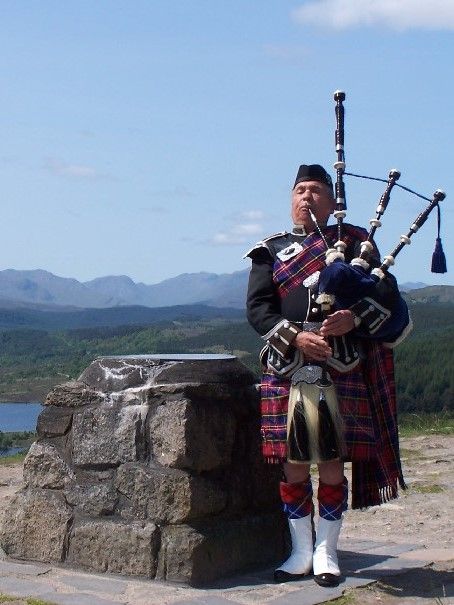BLOG 17: France / Calvados & Auxerre
Veröffentlicht: 06.07.2023
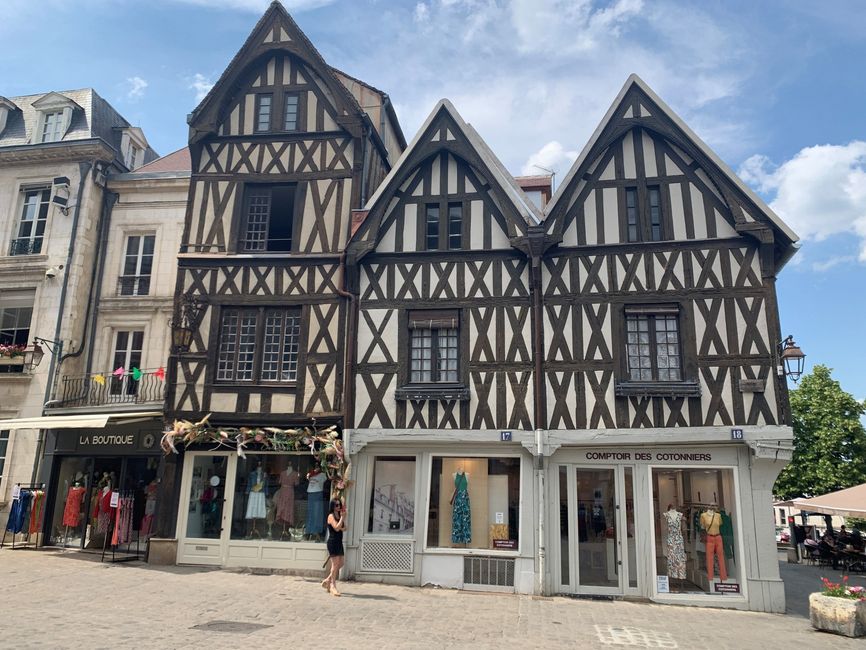
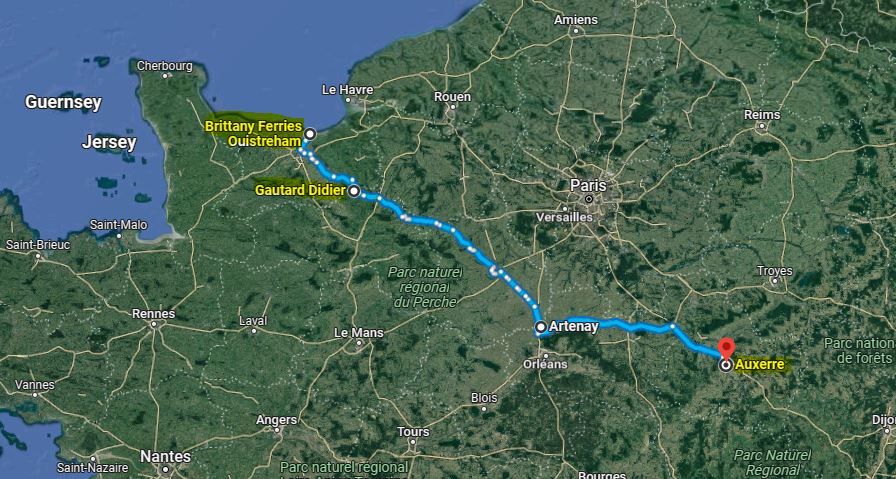
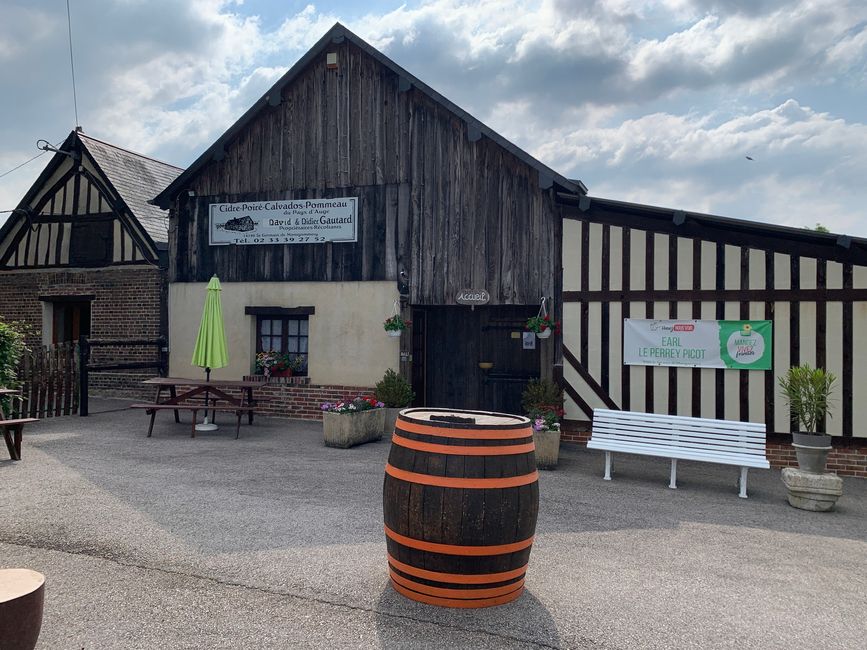
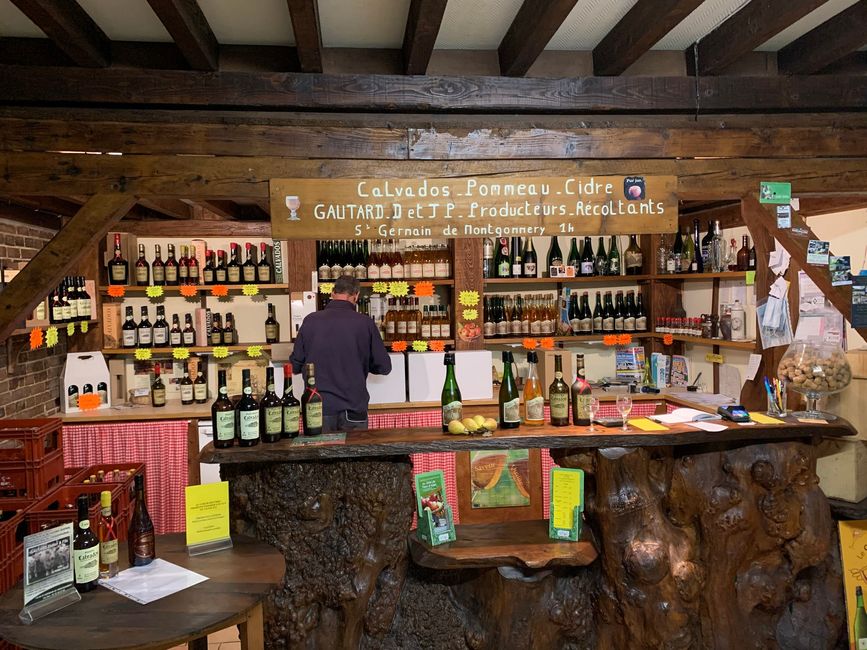

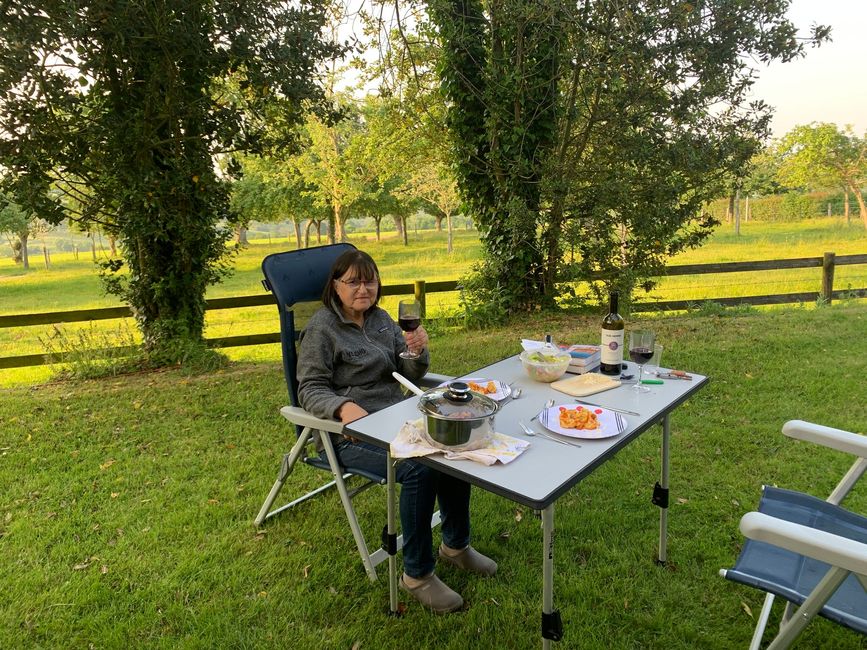
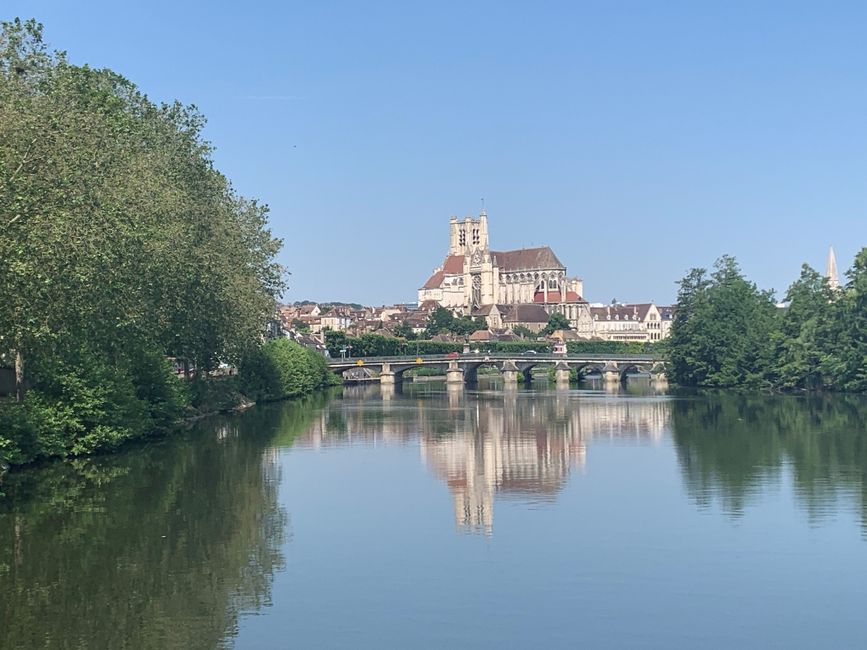
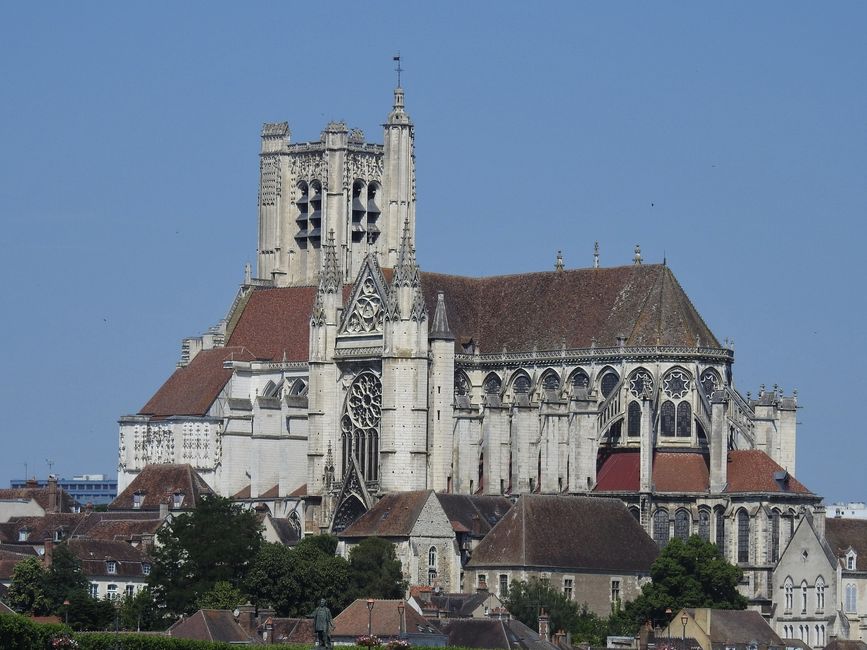
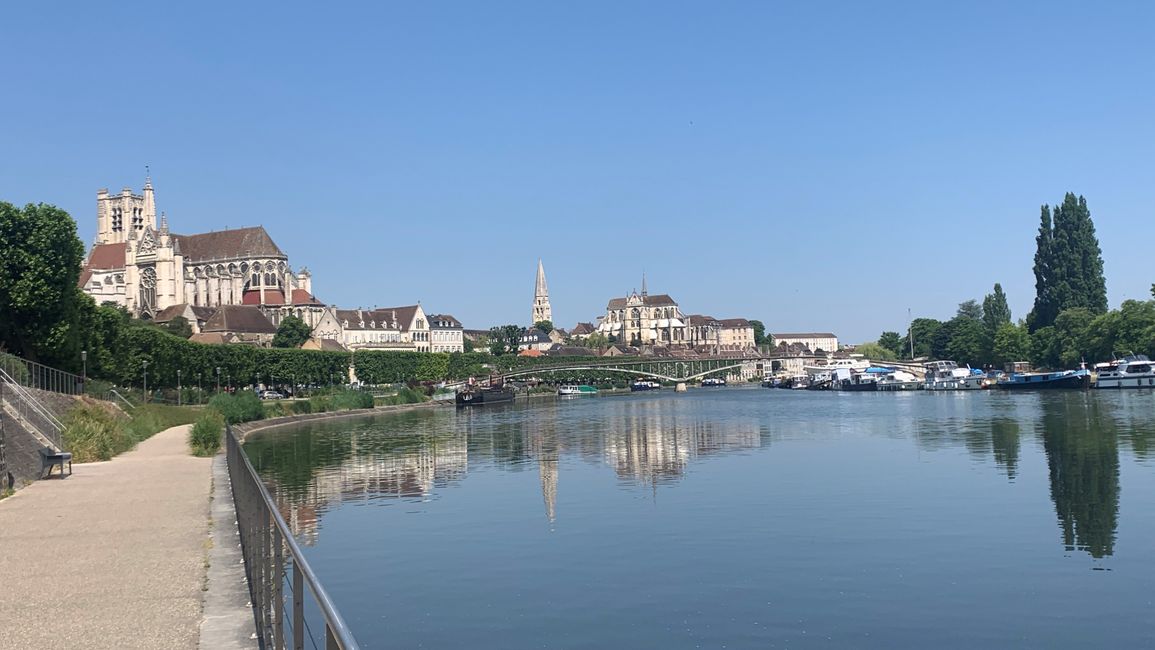
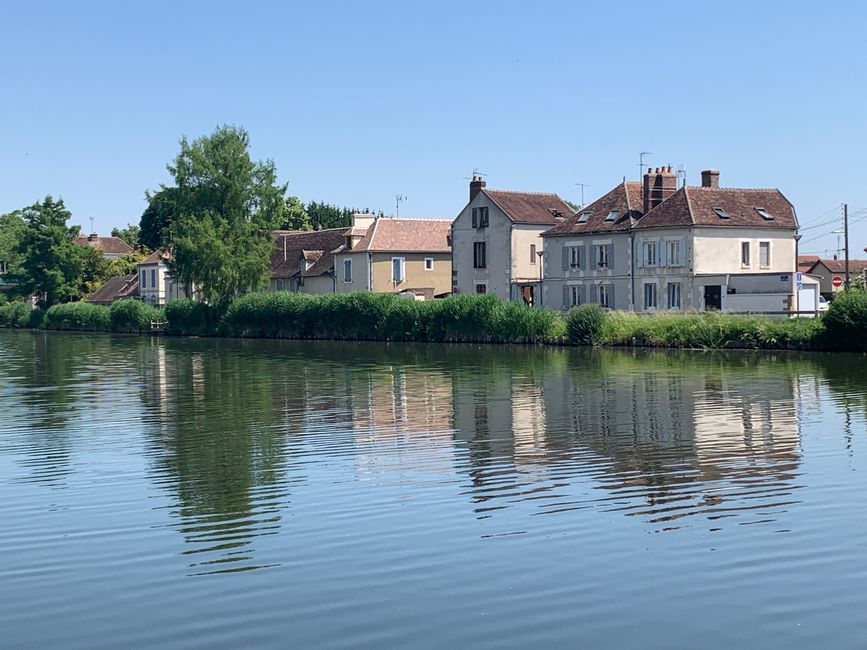
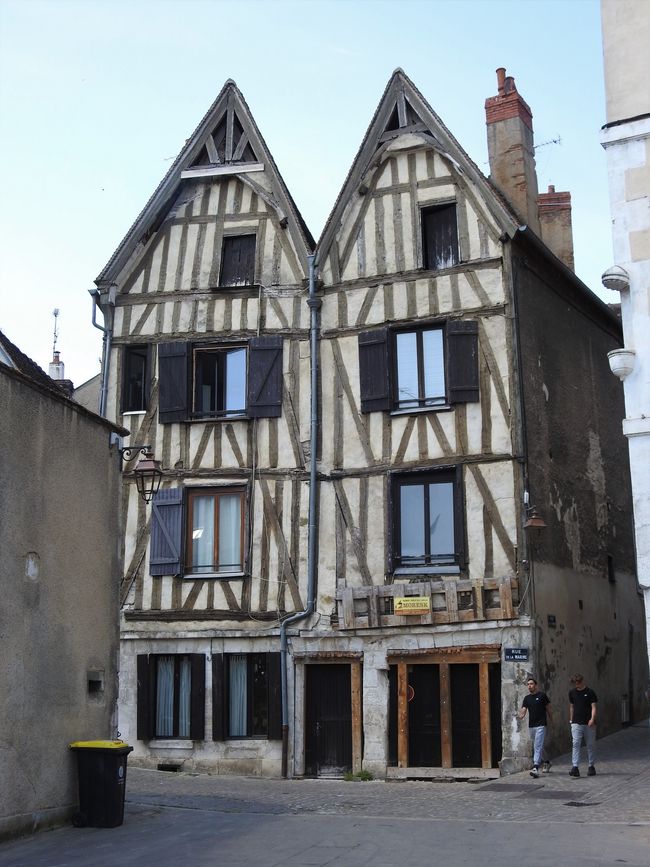
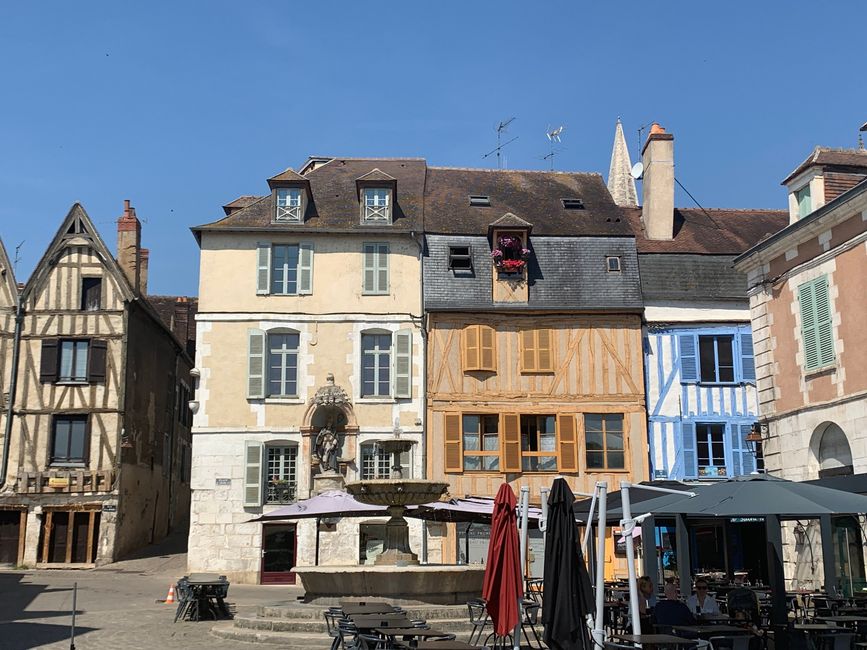
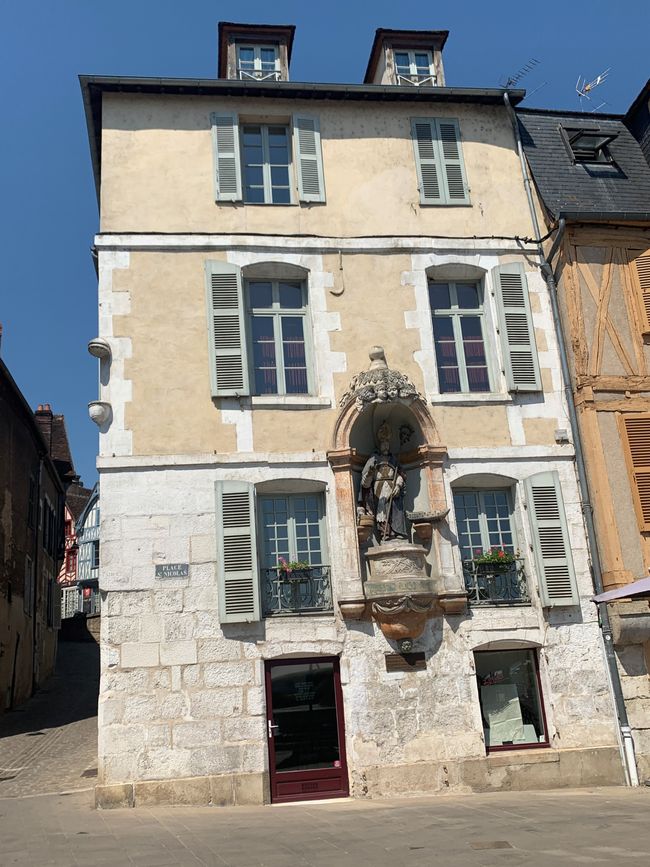
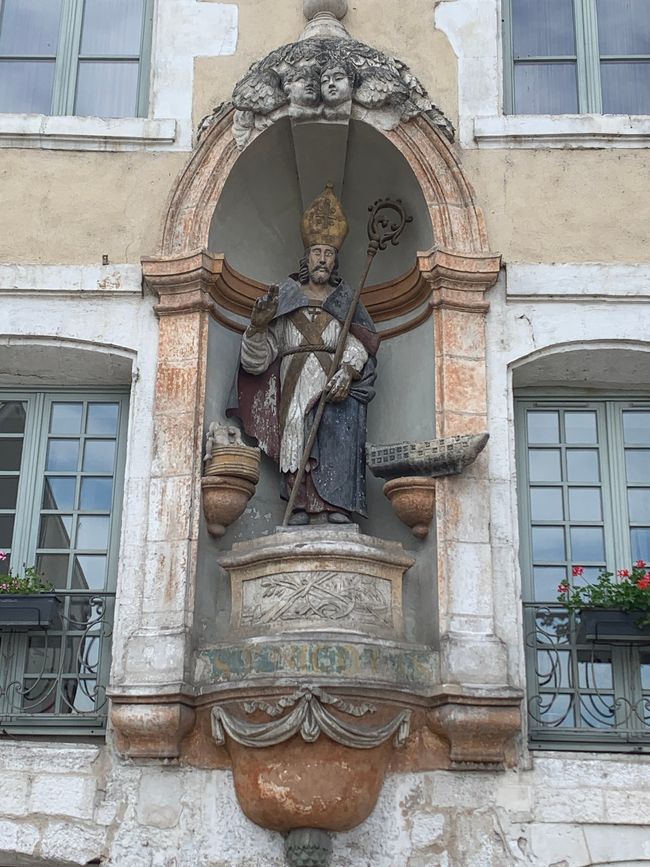
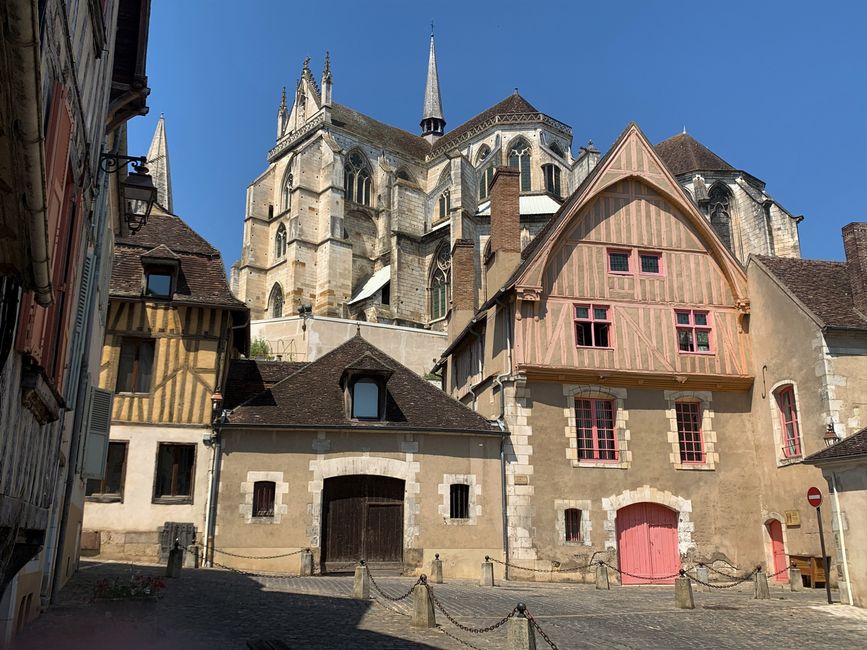
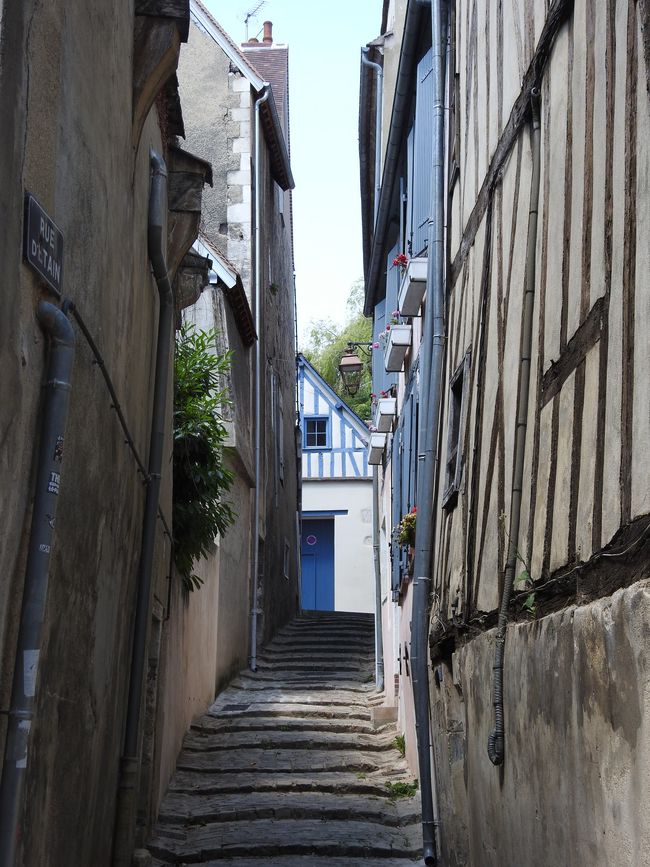
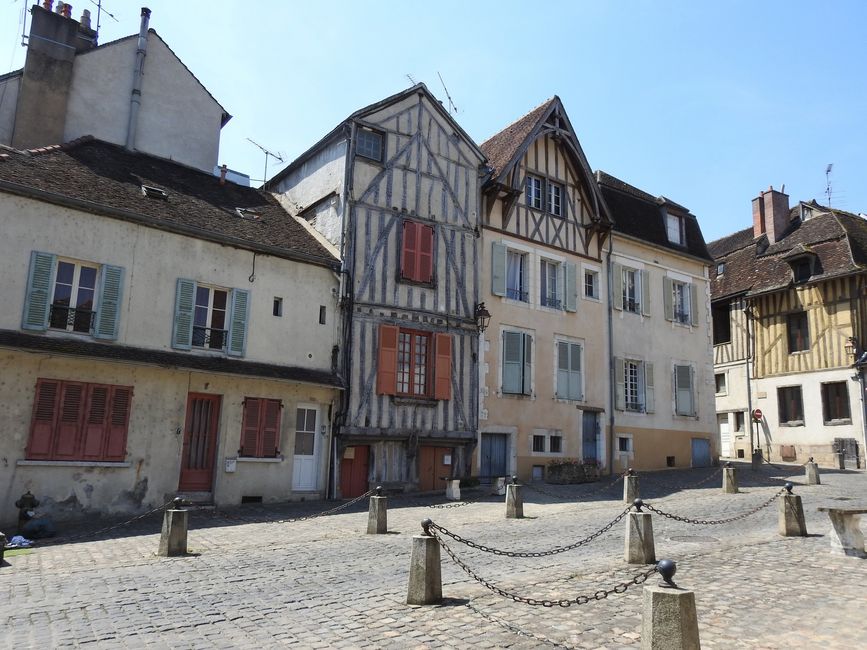
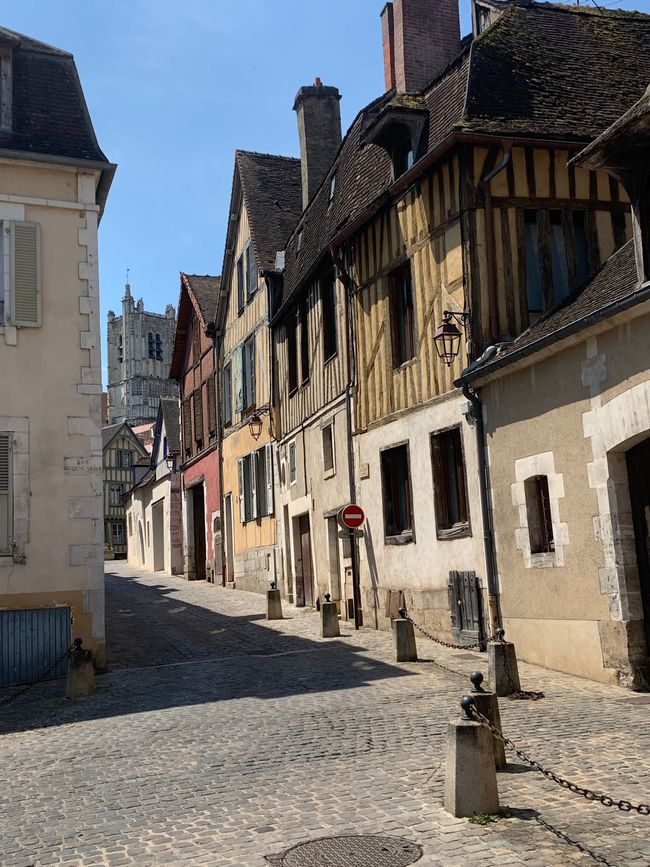
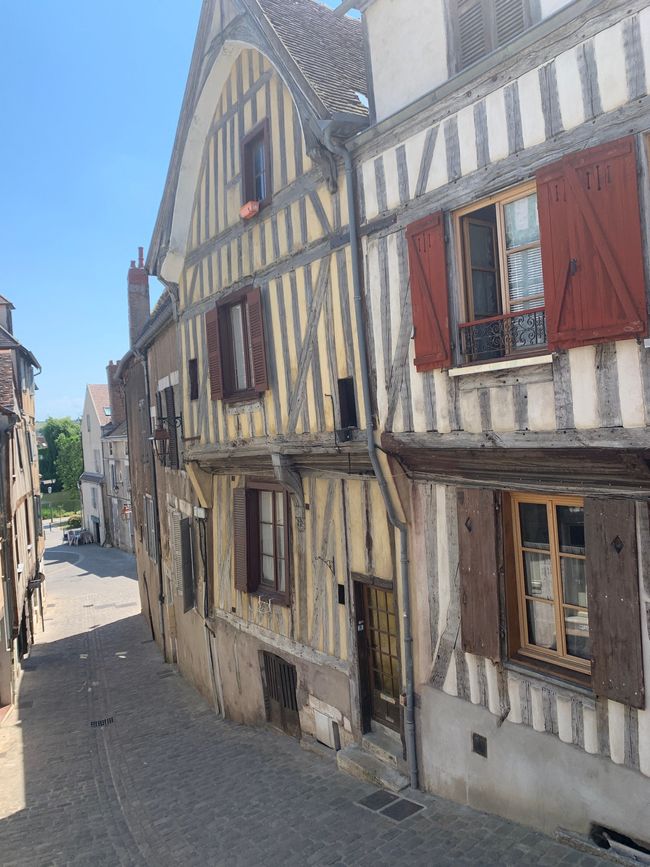
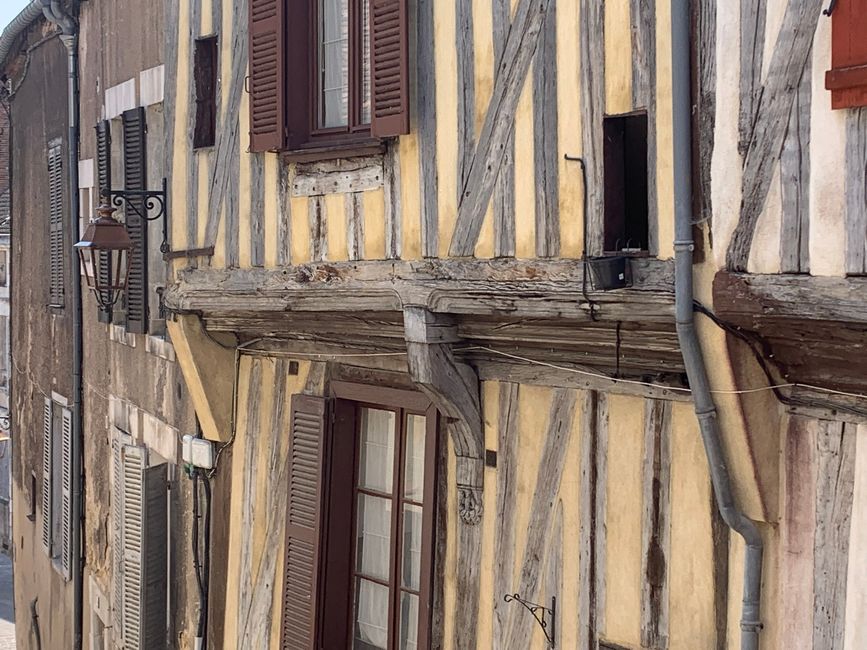
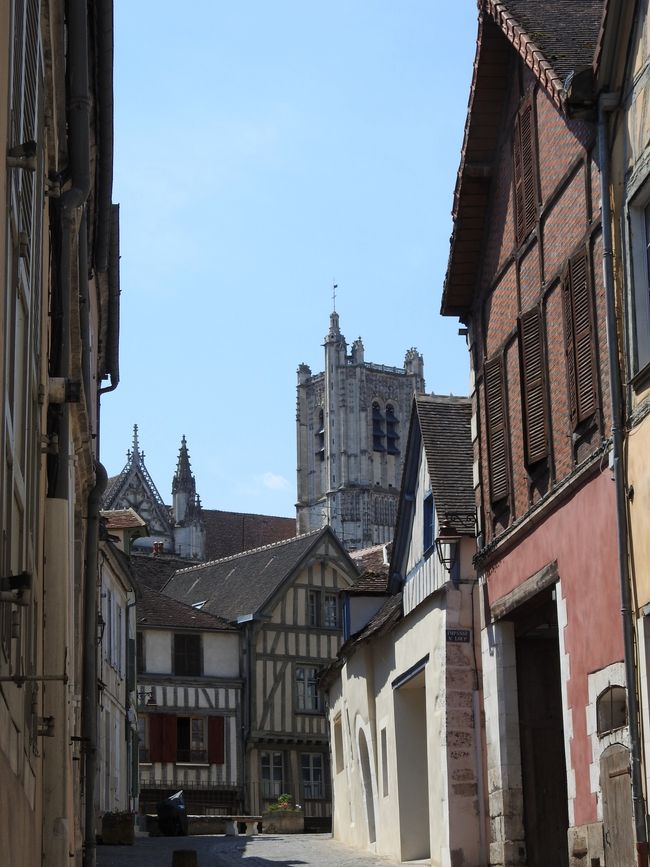
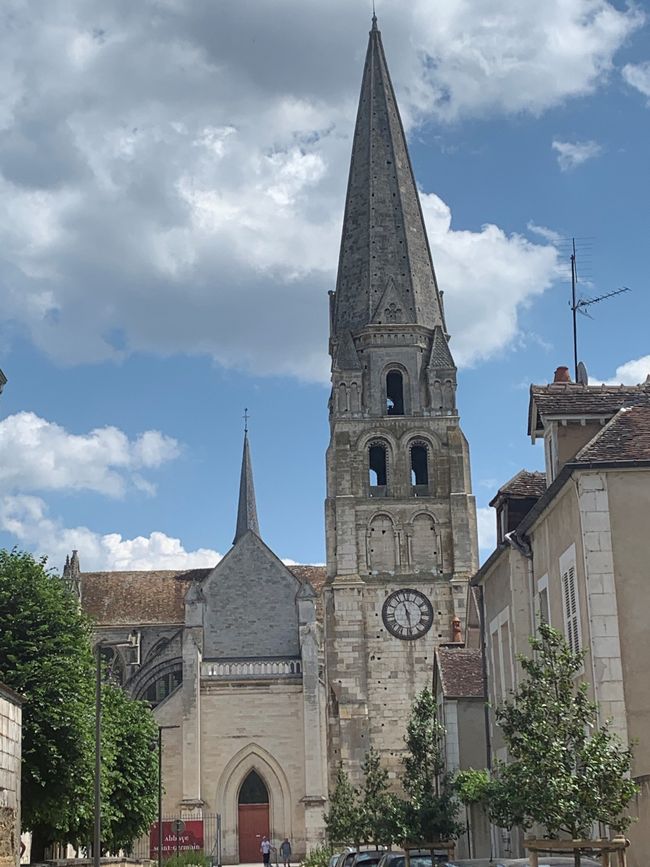
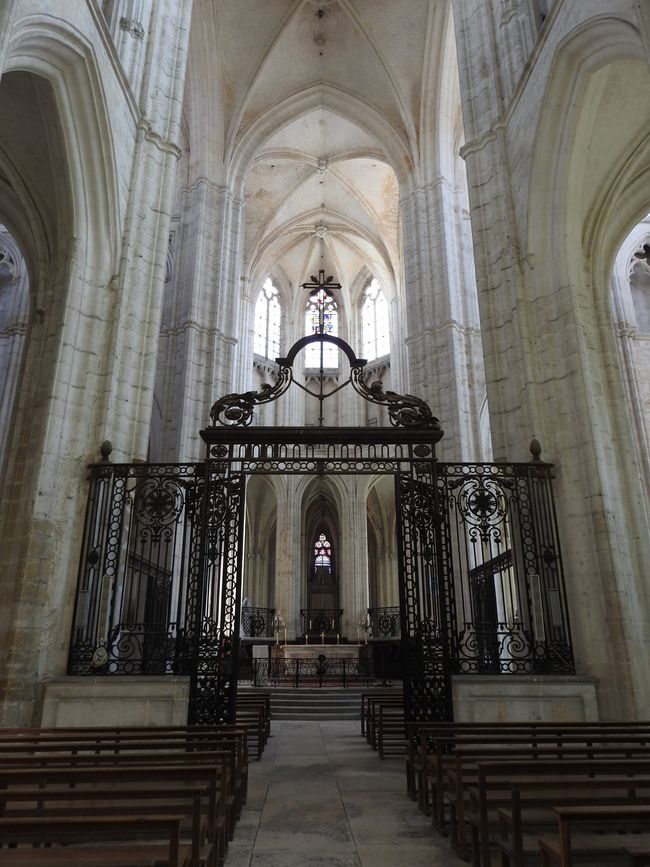
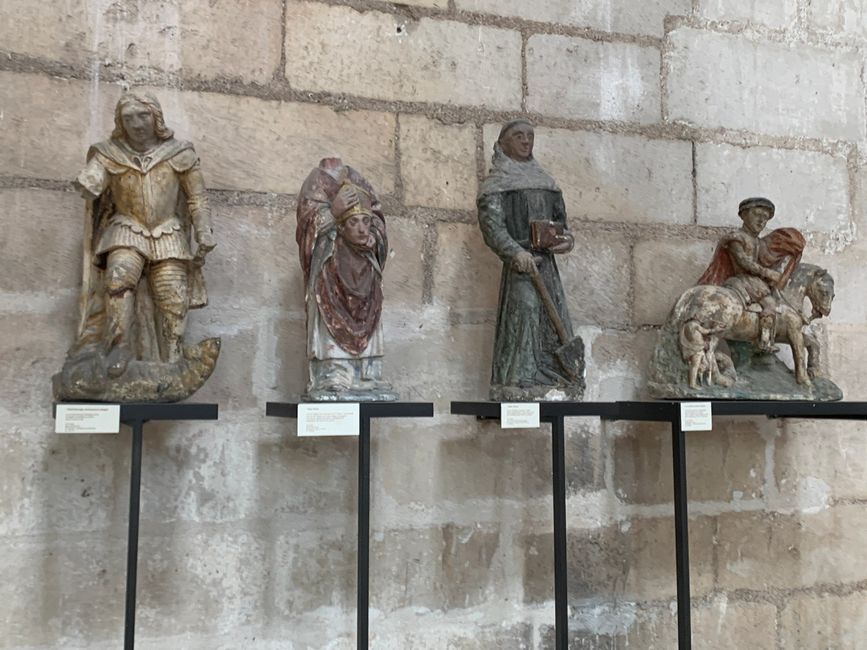
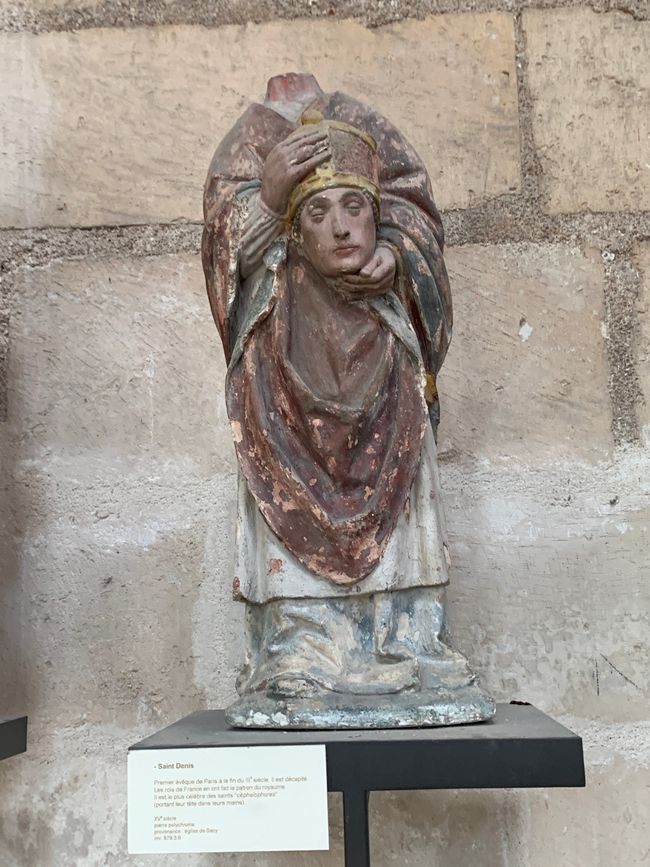
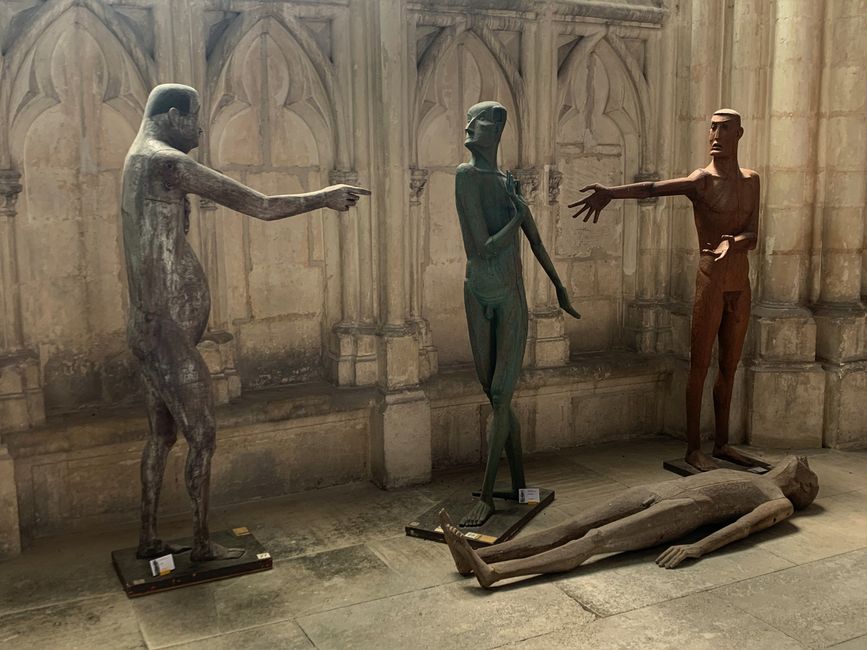
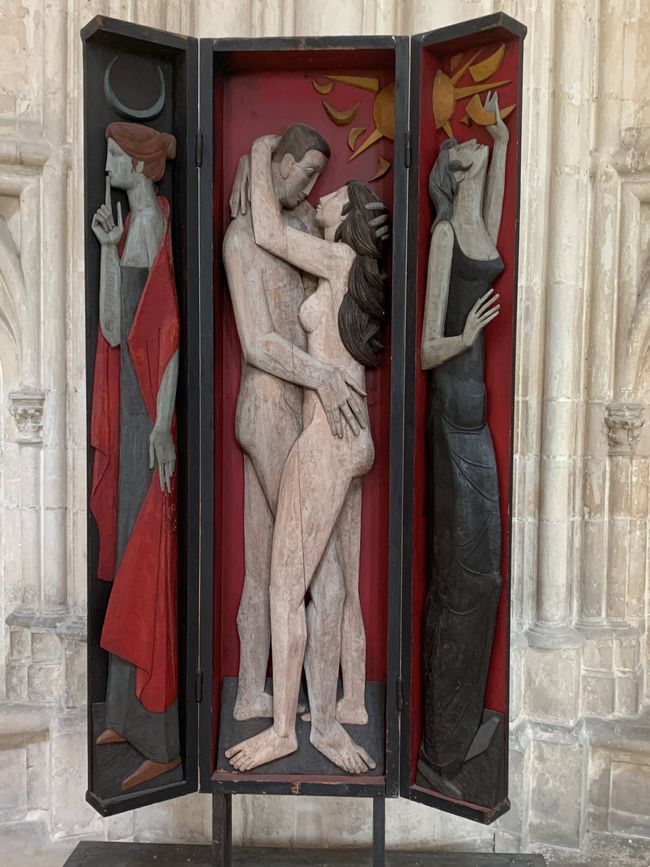
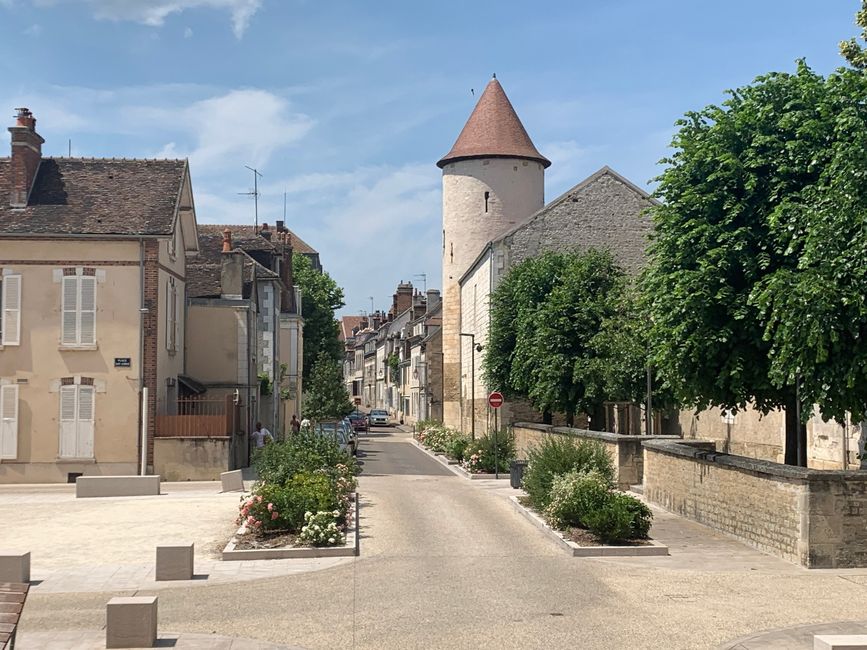
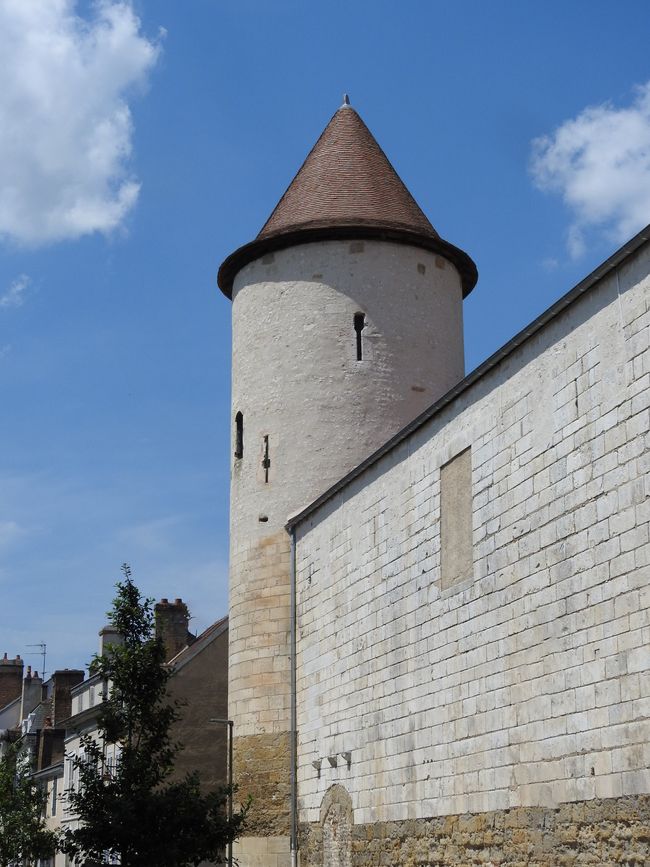
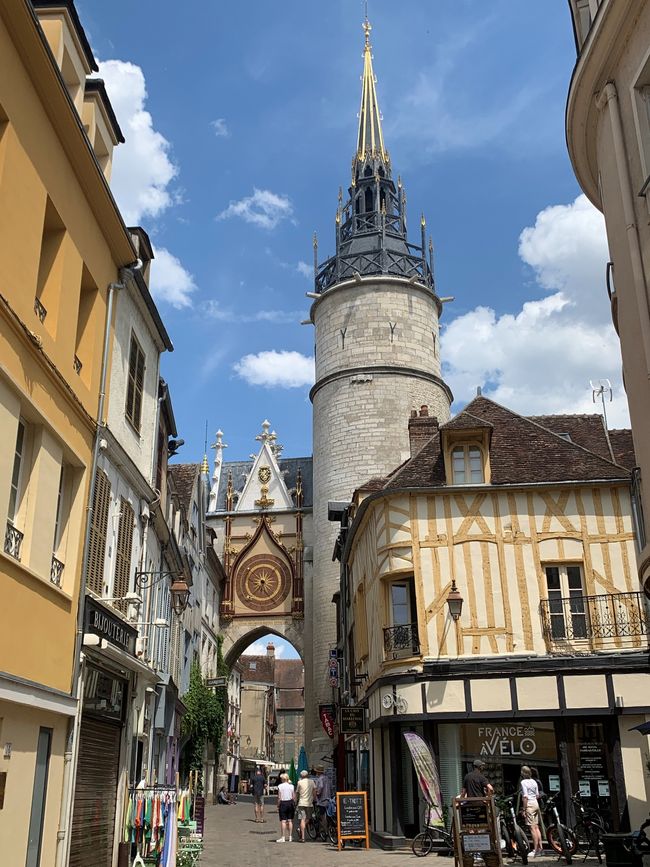
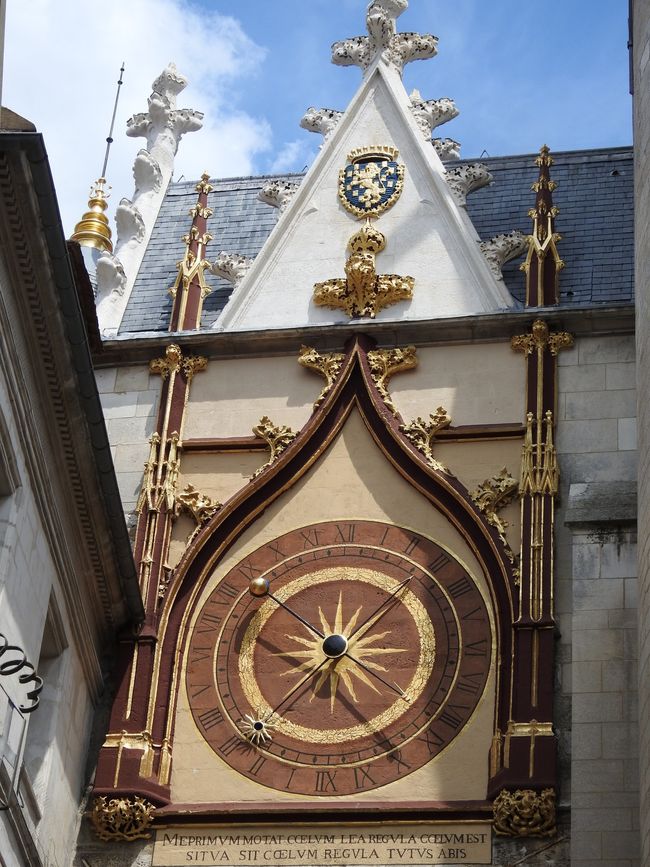
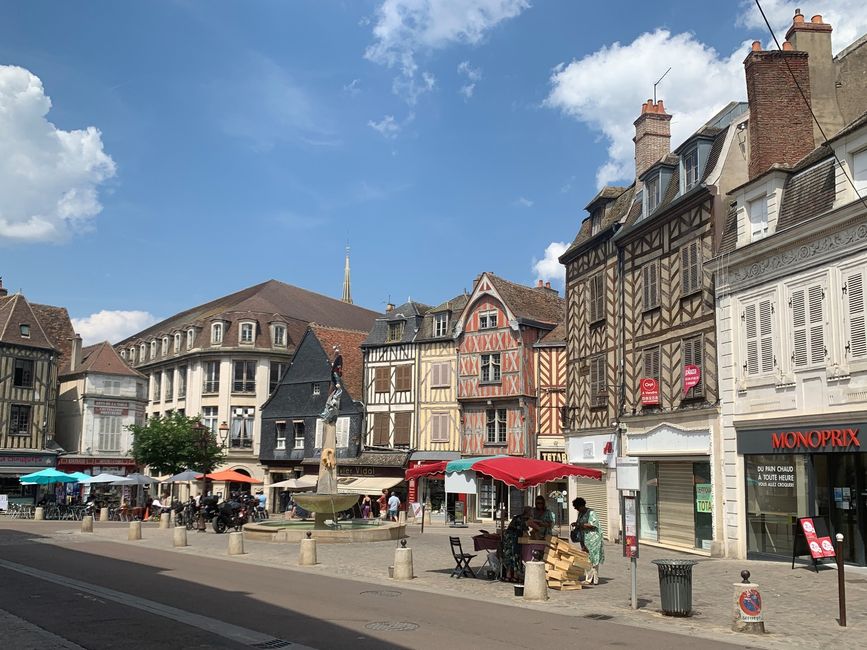
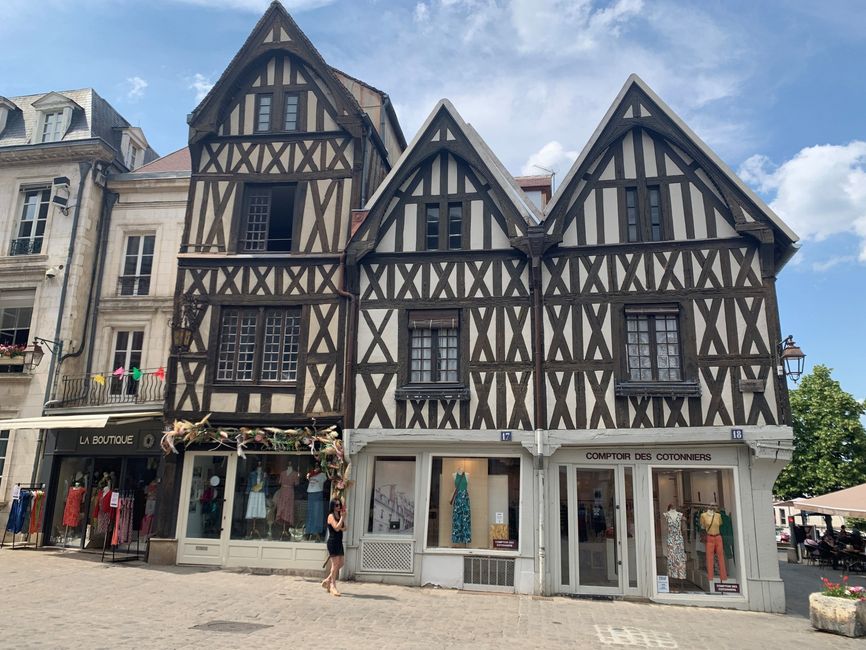
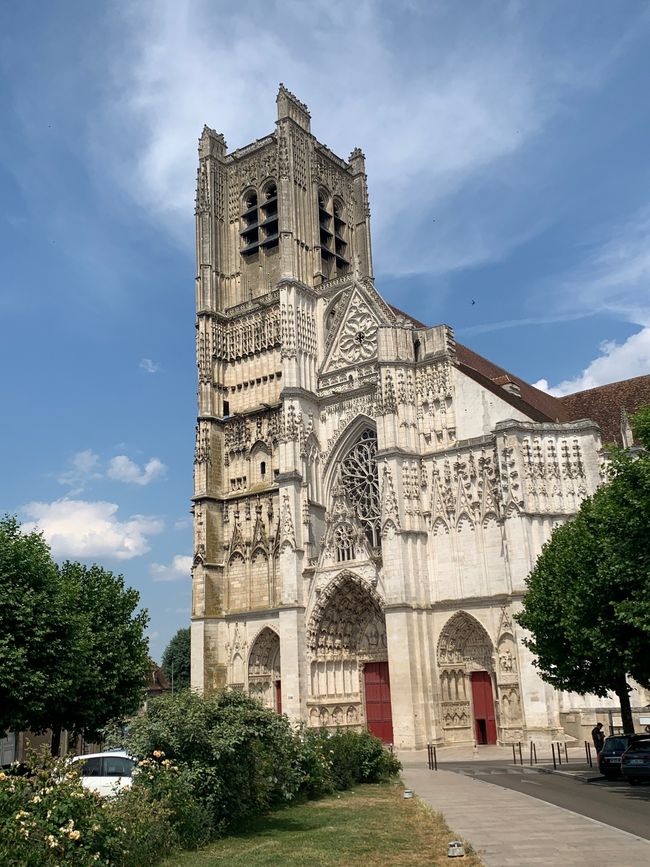
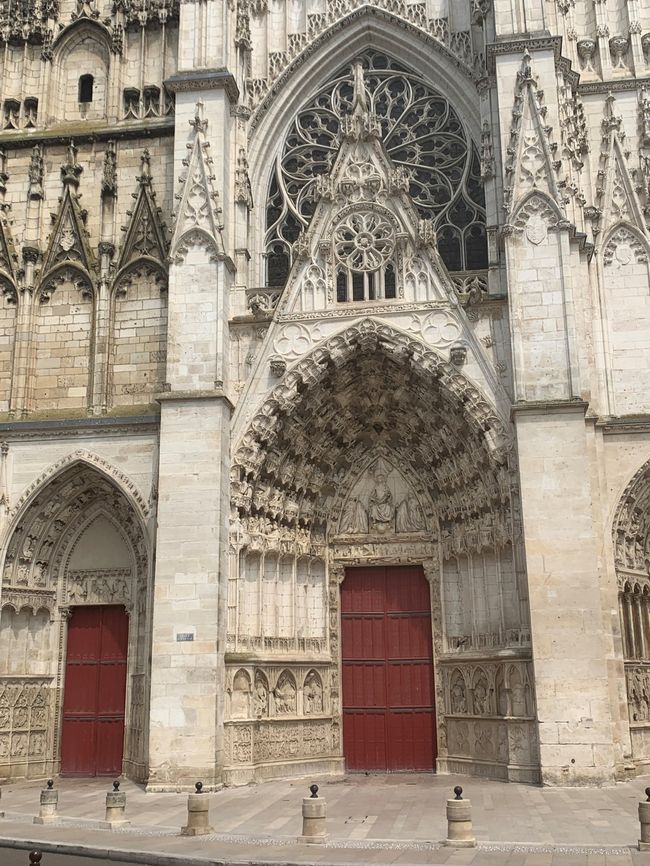
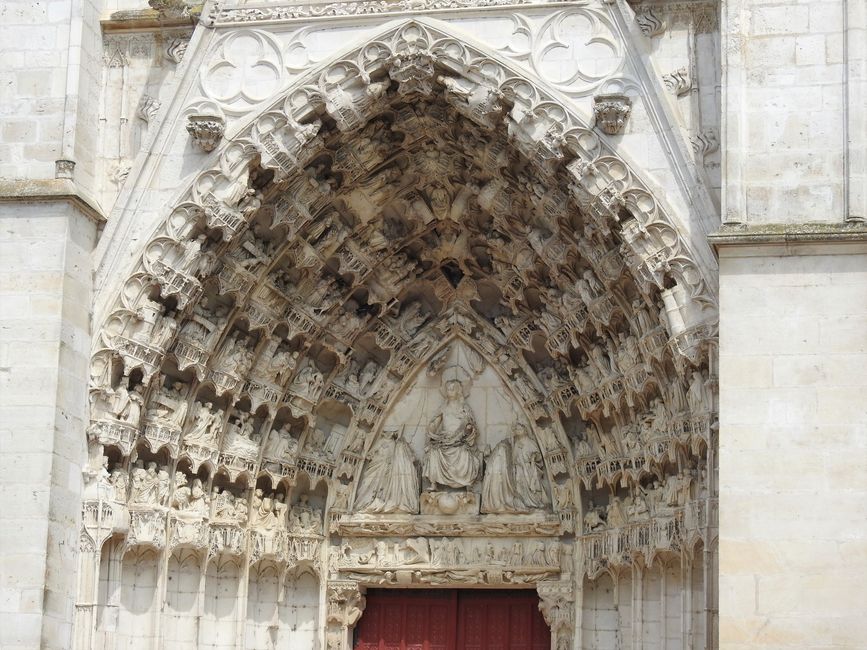
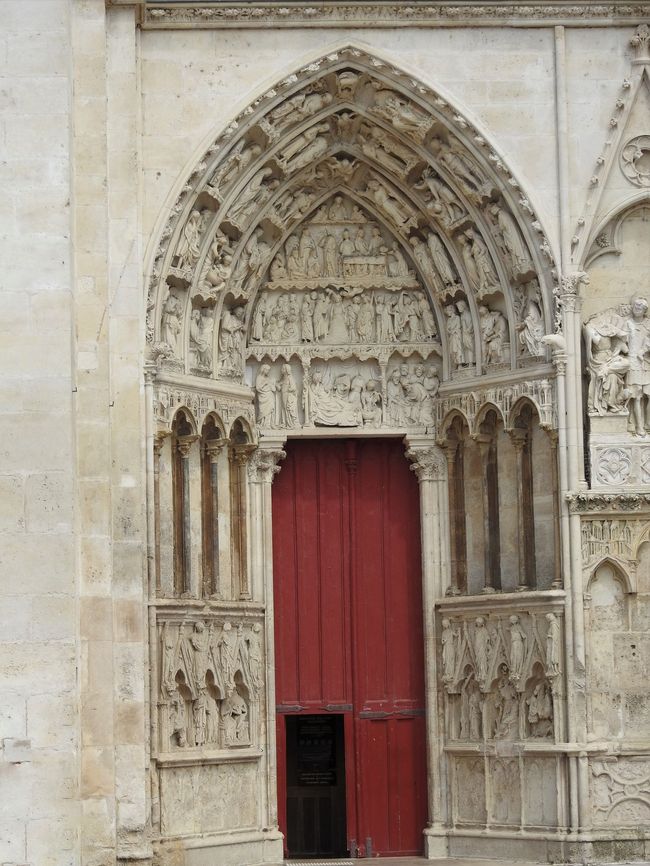
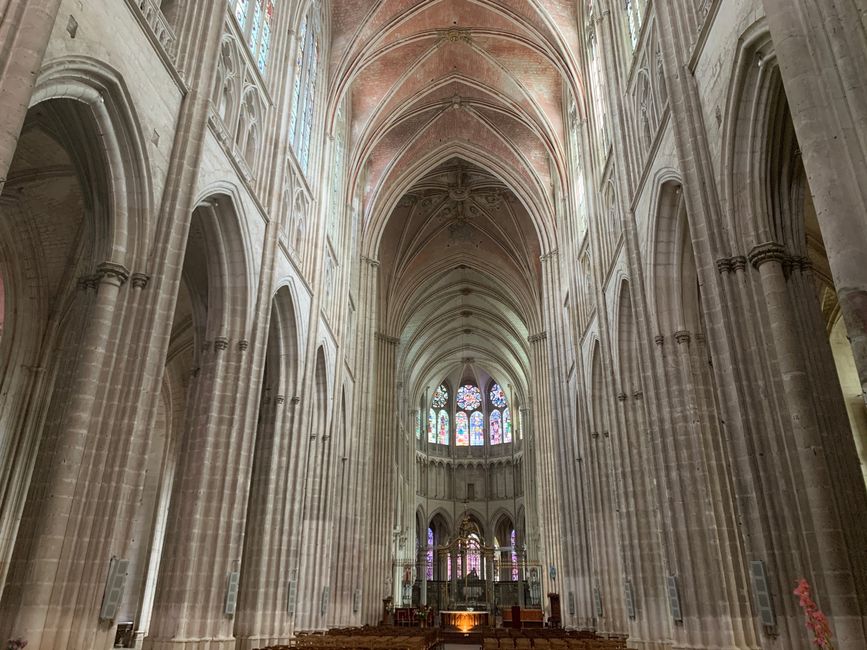
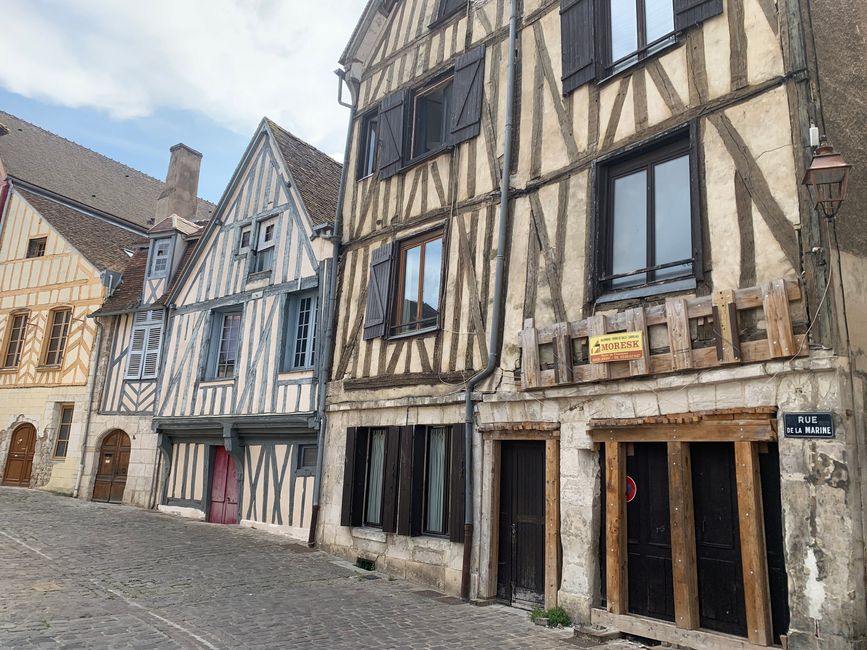
Newsletter abonnieren
Nach der sehr kurzen Nacht auf der Fähre sind wir am Morgen in Caen doch ziemlich müde, so dass wir den eigentlich geplanten Stadtbesuch auf einen Einkauf beim Supermarkt E. Leclerc beschränken – in Frankreich gibt es doch um einiges mehr an kulinarischen Köstlichkeiten zu kaufen…
Wir steuern zielstrebig das kleine Dörfchen St. Germain de Montgomery an. Hier waren wir schon auf unserer Frankreich Rundreise in 2020 und der der dortige „Calvados Bauer“ Didier und sein kostenloser Übernachtungsplatz der Vereinigung „France Passion“ sind uns nebst seinem ausgezeichneten Calvados und Pommeau in bester Erinnerung. Mittlerweile ist auch sein Sohn David aktiv – bei der Calvados Verkostung ist deutlich sparsamer als sein Vater… Wir treffen auch Didier wieder und obwohl er nur französisch spricht, haben wir wieder viel Spaß mit ihm, er geht auch mit der Zeit und verwendet einen Sprachübersetzter auf seinem Mobiltelefon.
Nach schönem „Camper Abendessen“ neben Didiers Apfelbäumen verbringen wir eine ruhige Nacht und am nächsten Tag „schlängeln“ wir uns auf Nebenstraßen zwischen Paris und Le Mans Richtung Burgund mit dem ersten Ziel Auxerre. Die Routenplaner schlagen immer Routen entweder über Paris oder Le Mans vor, aber das bekannte Verkehrschaos um Paris und das am Wochenende kommende 24 h Autorennen von Le Mans halten uns fern. Schon auf der Fähre waren viele – teilweise schon beachtlich angetrunkene – Briten auf dem Weg nach Le Mans…
„Camping Municipale“ in Auxerre ist gut für uns gelegen – in bequemer Fahrradreichweite zur Altstadt. Der nächste Tag bringt schon am Morgen bei strahlendem Sonnenschein ziemlich hohe Temperaturen, sodass wir, nachdem wir unser Räder sicher auf einem Fahrradparkplatz am Rande der Altstadt geparkt haben, zunächst einmal Erholung bei einem Drink in einem Café am Ufer des Flusses Yonne halten müssen.
Auxerre blickt auf eine wechselvolle Geschichte zurück. Zur Römerzeit ohne große Bedeutung, war Auxerre schon seit Ende des 3.Jahrhunderts Bischofssitz, 451 von den hunnischen Truppen unter Attila geplündert, wurde es 486 vom fränkischen König Chlodwig den Römern entrissen. Im Mittelalter war Auxerre Lehen an verschiedene Herzöge – Burgund, Monceaux, Cahtillon. Bourbon, wieder Burgund und Chalon. Im hundertjährigen Krieg eroberten und plünderten die Engländer Auxerre im Jahr 1358. Von den Engländern dann wieder an den französischen König verkauft, dann doch wieder Burgund und Orleans als Herzöge. Mit dem Tod Karls des Kühnen 1477 fiel Auxerre endgültig an die französische Krone, trotz des Widerspruchs des Kaisers Maximilian des I. Später nochmals Spielball zwischen Frankreich und den Habsburgern unter Karl V. wurde es in 1567 von den Hugenotten geplündert und in während der französischen Revolution kam es 1792 zu schlimmen Tumulten.
Im Zuge der Kriege gegen Napoleon wurde Auxerre im März 1814 vorübergehend auch von österreichischen Truppen besetzt…
Doch seither scheint es wohl etwas ruhiger geworden zu sein und so präsentiert sich die Altstadt von Auxerre heuet als friedliches Städtchen mit mittelalterlichem Flair. Die Stadt wird von zwei Kirchen dominiert, die Kathedrale Saint Etienne, deren Bau 1215 begonnen wurde und die ein Hauptwerk der burgundischen Gotik darstellt. Die heutige gotische Kathedrale ist der fünfte Bau an diesem Standort….
Im Norden der Altstadt besuchen wir zunächst die Abtei Saint-Germain d’Auxerre. Das erste Gebäude des ehemaligen Klosters war eine einfache Kapelle im 5. Jahrhundert. Vom 6. bis 9. Jahrhundert wurde die Kirche weiter ausgebaut, nach Bränden im 11. und 12. Jahrhundert brachten weitere Änderungen – der begonnene gotische Neubau wurde Ende des 14. Jahrhunderts ohne Fertigstellung
eingestellt. Im 16. Jahrhundert teilweise durch die Hugenotten zerstört, wurde das Kloster 1810 säkularisiert und die Kirche in der Folge teilweise abgerissen, so steht der erhalten gebliebene Südturm heute ohne Verbindung zu Basilika.
Wir können in der Kirche als starken Kontrast einige Plastiken zeitgenössischer Künstler bewundern – ein interessantes Zusammenspiel.
Es macht trotz der Hitze Spaß, durch die malerischen Gassen zu schlendern, so kommen wir zum alten Stadttor und dem Tour Gaillarde, dem Uhrturm von 1483, in dem seit dem 17. Jahrhundert eine astronomische Uhr arbeitet.
Natürlich machen die hohen Temperaturen so manche Pause erforderlich, doch es gibt hier genügend Cafés und Restaurants.
xxxxxxxxxxxxxxxxxxxxxxxxxxxxxxxxxxxxxxxxxxxxxxxxxxxxxxxxxxxxxxxxxxxxxxxxxxxxxxxx
After the very short night on the ferry, we are pretty tired in Caen in the morning, so we limit our originally planned visit to the city to shopping at the E. Leclerc supermarket – there are a lot more culinary delicacies to buy in France...
We drive directly towards the small village of St. Germain de Montgomery. We were here on our tour of France in 2020 and we have good memories of the local “Calvados farmer” Didier and his free overnight stay from the “France Passion” association, along with his excellent Calvados and Pommeau. Meanwhile, his son David is also active - he is much more economical than his father at the Calvados tasting... We also meet Didier again and although he only speaks French, we have a lot of fun with him again, he also keeps up with the times and uses the language translator of his mobile phone.
After a nice "camper dinner" next to Didier's apple trees, we spend a quiet night and the next day we "wind" on side roads between Paris and Le Mans in the direction of Burgundy with the first destination Auxerre. The route planners always suggest routes via either Paris or Le Mans, but the well-known traffic chaos around Paris and the upcoming 24 hour Le Mans car race at the weekend keep us away. Already on the ferry there were many Brits – some of whom were considerably drunk already – on their way to Le Mans...
"Camping Municipale" in Auxerre is well located for us - within easy cycling distance of the old town. The next day already brings quite high temperatures in the morning with bright sunshine, so that after we have parked our bikes safely in a bicycle parking lot on the edge of the old town, we first have to relax with a drink in a café on the banks of the Yonne River.
Auxerre looks back on an eventful history. In Roman times of no great importance, Auxerre had been a bishop's seat since the end of the 3rd century. In 451 it was plundered by the Hunnic troops under Attila, and in 486 it was snatched from the Romans by the Frankish King Clovis. In the Middle Ages, Auxerre was a fief to various dukes - Burgundy, Monceaux, Cahtillon. Bourbon, Burgundy again, and Chalon. In the Hundred Years' War, the English conquered and plundered Auxerre in 1358. The English then sold it back to the French king, and then Burgundy and Orleans again as dukes. With the death of Charles the Bold in 1477, Auxerre finally fell to the French crown, despite the objections of Emperor Maximilian I. Later again a pawn between France and the Habsburgs under Charles V. it was sacked by the Huguenots in 1567 and during the French Revolution I
in 1792 terrible riots broke out.
During the wars against Napoleon, Auxerre was temporarily occupied by Austrian troops in March 1814...
But things seem to have calmed down a bit since then and today the old town of Auxerre presents itself as a peaceful little town with medieval flair. The city is dominated by two churches, the Saint Etienne Cathedral, construction of which began in 1215 and is a major work of Burgundian Gothic. The current Gothic cathedral is the fifth building on this site….
In the north of the old town, we first visit the Abbey of Saint-Germain d'Auxerre. The first building of the former monastery was a simple chapel in the 5th century. The church was further expanded from the 6th to the 9th century, after fires in the 11th and 12th centuries brought further changes - the Gothic new building that had begun was left unfinished at the end of the 14th century.
Partially destroyed by the Huguenots in the 16th century, the monastery was secularized in 1810 and the church was partially demolished as a result, so the south tower that has been preserved is not connected to the basilica today.
As a strong contrast, we can admire some sculptures by contemporary artists in the church - an interesting interplay.
Strolling through the picturesque streets is fun despite the heat, so we come to the old city gate and the Tour Gaillarde, the clock tower from 1483, in which an astronomical clock has been working since the 17th century.
Of course, the high temperatures make it necessary to take some breaks, but there are enough cafes and restaurants here.
Newsletter abonnieren
Antworten
